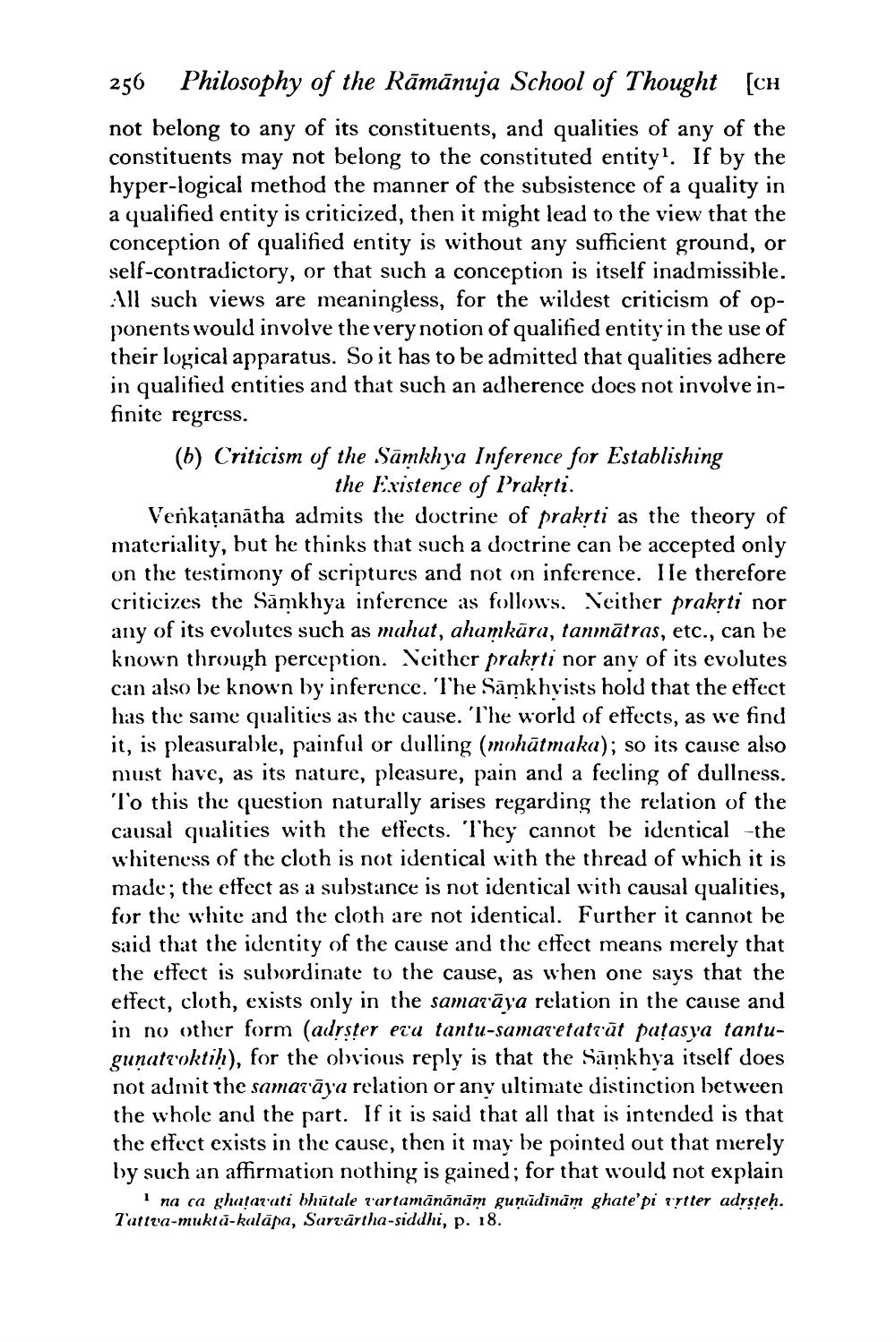________________
256 Philosophy of the Rāmānuja School of Thought [CH not belong to any of its constituents, and qualities of any of the constituents may not belong to the constituted entity?. If by the hyper-logical method the manner of the subsistence of a quality in a qualified entity is criticized, then it might lead to the view that the conception of qualified entity is without any sufficient ground, or self-contradictory, or that such a conception is itself inadmissible. All such views are meaningless, for the wildest criticism of opponents would involve the very notion of qualified entity in the use of their logical apparatus. So it has to be admitted that qualities adhere in qualified entities and that such an adherence does not involve infinite regress. (6) Criticism of the Samkhya Inference for Establishing
the Existence of Prakrti. Venkațanātha admits the doctrine of prakrti as the theory of materiality, but he thinks that such a doctrine can be accepted only on the testimony of scriptures and not on inference. Ile therefore criticizes the Sāmkhya inference as follows. Veither prakrti nor any of its evolutes such as mahat, ahumkāru, tanmātras, etc., can be known through perception. Neither prakrti nor any of its evolutes can also be known by inference. The Sāmkhvists hold that the effect has the same qualities as the cause. The world of effects, as we find it, is pleasurable, painful or dulling (mohātmaka); so its cause also must have, as its nature, pleasure, pain and a feeling of dullness. To this the question naturally arises regarding the relation of the causal qualities with the effects. They cannot be identical the whiteness of the cloth is not identical with the thread of which it is made; the effect as a substance is not identical with causal qualities, for the white and the cloth are not identical. Further it cannot be said that the identity of the cause and the effect means merely that the effect is subordinate to the cause, as when one says that the effect, cloth, exists only in the samarāya relation in the cause and in no other form (adrster eta tantu-samavetatīūt patasya tantugunatvoktiḥ), for the obvious reply is that the Samkhya itself does not admit the samatāya relation or any ultimate distinction between the whole and the part. If it is said that all that is intended is that the effect exists in the cause, then it may be pointed out that merely by such an affirmation nothing is gained; for that would not explain
Ina ca ghatarati bhūtale rartamānānām gunīdinām ghate'pi urtter adrsteh. Tattra-muktū-kalapa, Sartärtha-siddhi, p. 18.




